
The Center, founded in 1985, is an environmental organization dedicated to protecting the environment, enhancing human, animal and plant ecologies, promoting the efficient use of natural resources and expanding participation in the environmental movement.
Tuesday, March 27, 2007
U.S. EPA Administrator Stephen Johnson Is In India

Thursday, March 22, 2007
Alternative Ethanol Solutions : Dominican Republic

Monday, March 19, 2007
Center To Visit Nuclear Facilities in China


Wednesday, March 07, 2007
Chinese Premier Talks About Energy and the Environment
 Chinese Prime Minister Wen Jiabao, right, wants the country to improve energy efficiency and environmental protection. He recently gave a speech to the National People's Congress and pledged more spending on poor residents in rural areas.
Chinese Prime Minister Wen Jiabao, right, wants the country to improve energy efficiency and environmental protection. He recently gave a speech to the National People's Congress and pledged more spending on poor residents in rural areas.The most recent five-year plan calls for a 20 percent reduction in energy consumption per unit of gross domestic product. The National People's Congress is currently in its two-week session.
Saturday, March 03, 2007
Department of Energy Ethanol Grants Awarded

1. Broin Cos of Sioux Fall, S.D. (teamed with DuPont Co)
London Wants To Reduce Its Carbon Footprint
Thursday, March 01, 2007
New Coalition Promotes Ethanol

Wednesday, February 28, 2007
TXU
Reilly works for Texas Pacific and he negotiated the deal with the environmental groups. TXU Corp is the largest power company in Texas with 2.4 million electricity customers and 18,300 megawatts of capacity (from 50 generating plants). The enviros agreed to drop their opposition to TXU's coal plant expansion in exchange for the 3 for 11 switch.
Tuesday, February 27, 2007
China To Build Nuclear Plant Inland

China's two major nuclear plants, Daya Bay and Qinshan are situated in the coastal areas. The power plant in Hunan will be the first in China's inland areas.
China wants to build two nuclear power plants of 1,000 megawatts each for the next 15 years in hopes of reaching a combined capacity of 40,000 megawatts by 2020.
Currently, China has just six nuclear power plants, 11 reactors on its east and southeast coasts. (Asian Biz)
Monday, February 26, 2007
China Orders Two More Nuclear Plants

Beijing awarded contracts for four reactors to the American-based Westinghouse Electric, now owned by Toshiba of Japan in 2006.
China now has a total of 6 plants ordered for construction.
Tuesday, February 13, 2007
Sir Nicholas Stern Appears Before Senate Energy Committee
 The Senate Energy & Natural Resources Committee held a hearing today to appraise the Stern Review -- a major report on the economic impacts of global warming. Testifying for the first time before Congress is Sir Nicholas Stern, left, head of Britain’s Economic Service, former World Bank chief economist and author of the namesake report.
The Senate Energy & Natural Resources Committee held a hearing today to appraise the Stern Review -- a major report on the economic impacts of global warming. Testifying for the first time before Congress is Sir Nicholas Stern, left, head of Britain’s Economic Service, former World Bank chief economist and author of the namesake report.Background: In 2005, the British government asked Sir Nicholas to undertake this major independent study. Stern assembled a team of top economists, scientists and other specialists. It took one year to gather and analyze the data, and they presented their findings last October. That assessment attracted a remarkable amount of international attention.
Wednesday, February 07, 2007
Paul Driessen Talks About Global Warming Profits

Thursday, February 01, 2007
Dayolight Savings Time Moved Up To March 11
Tuesday, January 30, 2007
Tennessee Valley Authority Wants 2 New Nuclear Plants
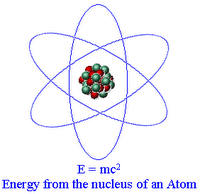 The Tennessee Valley Authority (TVA) will submit applications to build two new nuclear reactors and restart its oldest reactor after a 22-year shutdown at Browns Ferrys. TVA will also decide by August whether to spend up to $2 billion to complete the unfinished Unit 2 reactor at Watts Bar Nuclear Plant. The total cost could exceed $7 billion for design and construction. (Wash Post)
The Tennessee Valley Authority (TVA) will submit applications to build two new nuclear reactors and restart its oldest reactor after a 22-year shutdown at Browns Ferrys. TVA will also decide by August whether to spend up to $2 billion to complete the unfinished Unit 2 reactor at Watts Bar Nuclear Plant. The total cost could exceed $7 billion for design and construction. (Wash Post)
Nuclear Plants Do Not Need To Be Protected From Planes
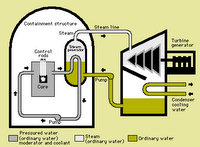 The Nuclear Regulatory Commission has ruled 5-to-0 that the nation's 103 nuclear power plants do not need to protect themselves from potential attacks by terrorists using airplanes.
The Nuclear Regulatory Commission has ruled 5-to-0 that the nation's 103 nuclear power plants do not need to protect themselves from potential attacks by terrorists using airplanes.The ruling was in response to a 2004 petition by the Committee to Bridge the Gap, a Los Angeles nonprofit group, that said nuclear plants should build shields made of steel I-beams and cabling or take other steps to prevent a release of radiation in case of an air attack. Eight state attorneys general backed the petition. (NRC) (Wash Post)
Wednesday, January 24, 2007
Senator James Inhofe Starts Blog
 He was the Chairman of the Senate Environment & Public Works Committee until the Republicans lost the Senate. He does not believe in global warming. Oh, he believes the temperature is rising, but believes it is a normal Earth adjustment - - just part of another climate cycle in the history of the Earth. Now California's Barbara Boxer chairs the committee and will be promoting climate change legislation like there is no tomorrow.
He was the Chairman of the Senate Environment & Public Works Committee until the Republicans lost the Senate. He does not believe in global warming. Oh, he believes the temperature is rising, but believes it is a normal Earth adjustment - - just part of another climate cycle in the history of the Earth. Now California's Barbara Boxer chairs the committee and will be promoting climate change legislation like there is no tomorrow. Tuesday, January 23, 2007
Ford Edge Hybrid Electric Vehicle Should Be The Future
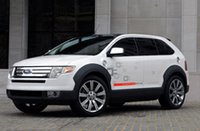 We like the Ford HySeries Edge. We have been promoting this concept for years. It is the future and should be the future because it gets good mileage and does not emit smog or greenhouse gases. In fact, the only emission is harmless water vapor. Unfortunately, it now costs $2 million. Hopefully mass production and government assistance will help bring that price down to $30,000 or lower.
We like the Ford HySeries Edge. We have been promoting this concept for years. It is the future and should be the future because it gets good mileage and does not emit smog or greenhouse gases. In fact, the only emission is harmless water vapor. Unfortunately, it now costs $2 million. Hopefully mass production and government assistance will help bring that price down to $30,000 or lower.The Ford Edge is a plug-in fuel cell hybrid with a fuel cell and Lithium-ion battery. This is the ideal. The GM Volt has a Lithium-ion battery too, but the other propulsion component is a gasoline engine. We prefer the Edge. The Edge has a fuel cell that recharges the battery while driving. It has a range of 225 miles with fuel cell recharging. It can be recharged at any outlet.
Much work is still needed on the Lithium-ion batteries. They are unstable and can ignite or explode if not manufactured properly and exposed to high temperatures.
Tuesday, January 09, 2007
The Polar Bear, the Penguin and the Eagle


 The Eagle will be taken off of the Endangered Species List. It is well overdue. There are eagles everwhere. There was even a famous eagle melodrama at the Woodrow Wilson Bridge replacement construction site south of Washington, DC. The delisting was first proposed during the Clinton administration but they just didn't want to do it. Probably for political reasons.
The Eagle will be taken off of the Endangered Species List. It is well overdue. There are eagles everwhere. There was even a famous eagle melodrama at the Woodrow Wilson Bridge replacement construction site south of Washington, DC. The delisting was first proposed during the Clinton administration but they just didn't want to do it. Probably for political reasons.Conversely, global warming is threatening the polar bear by destroying its sea ice habitat in the Arctic region. The Bush administration is proposing to list the polar bear as a threatened species under the Endangered Species Act (ESA). The ESA is administered by the U.S. Fish & Wildlife Service (FWS) in the Department of Interior. Interior Secretary Dirk Kempthorne announced the proposal at a press conference in Washington, DC. Probably not good news to the average Arctic seal, but evidently they are not threatened . Although not proposed to be listed as threatened or endangered, the penguin, according to some reports and studies is also threatened by the deicing of the Arctic.
Plug-In Fuel Cell Hybrid Electric Cars
 The Lithium-ion car batteries are expensive. Once they are mass produced the price will come down. And Lithium-ion batteries don't like heat. That little problem can be solved too. The GM Volt, right, is a big step in the right direction. The Volt still has a gasoline engine. We would like to replace that with a fuel cell. The Volt will travel 40 miles on the battery before tapping into the gasoline engine. GM killed off its previous electric vehicle. GM has also sold more cars outside the U.S. than in the U.S. in the last two years. Conversely, Toyota is quickly becoming the top car seller in the U.S. Ford barely held them off for the number 2 position behind GM last year. Toyota Motor Company also has plans to build subcompact cars in China.
The Lithium-ion car batteries are expensive. Once they are mass produced the price will come down. And Lithium-ion batteries don't like heat. That little problem can be solved too. The GM Volt, right, is a big step in the right direction. The Volt still has a gasoline engine. We would like to replace that with a fuel cell. The Volt will travel 40 miles on the battery before tapping into the gasoline engine. GM killed off its previous electric vehicle. GM has also sold more cars outside the U.S. than in the U.S. in the last two years. Conversely, Toyota is quickly becoming the top car seller in the U.S. Ford barely held them off for the number 2 position behind GM last year. Toyota Motor Company also has plans to build subcompact cars in China.We believe the true hybrid car revolution will probably happen in China. Amercans are spoiled and want more creature comforts when the average Chinese citizen might be more interested in a vehicle that will simply take him or her to and from work. Chrysler and China's Chery Automobile Company plans to build small cars for sale worldwide. The tiny 'B-cars' are a good model for the plug-in fuel cell hybrid electric vehicles the Center is promoting. Malcolm Bricklin lost out on a deal to partner with Chery Automobile Comapny to build a revelutionary plug-in hybrid. DaimlerChryler beat him out. (Electric Vehicles in China) (Wall Street Journal)
Malcolm Bricklin To Build Plug-In Hybrid Vehicles

 We are on the same page with Malcolm Bricklin left. Remember the gull-wing Bricklin? It was the cult classic car of the 1970s. The coolest car on the road. DeLoreon copied the Bricklin. Now he has his eyes on hybrids. He is currently chairman and CEO of Visionary Vehicles and wants to start fresh and mass produce a plug-in hybrid electric vehicle. GM, Ford and Daimler Chrysler also want to introduce a dependable plug-in vehicle.
We are on the same page with Malcolm Bricklin left. Remember the gull-wing Bricklin? It was the cult classic car of the 1970s. The coolest car on the road. DeLoreon copied the Bricklin. Now he has his eyes on hybrids. He is currently chairman and CEO of Visionary Vehicles and wants to start fresh and mass produce a plug-in hybrid electric vehicle. GM, Ford and Daimler Chrysler also want to introduce a dependable plug-in vehicle.The ideal vehicle would be one under $10,000 that uses a battery (Lithium-ion or Nickel Metal Hydride), a fuel cell and regenerative braking to power the vehicle. It would be very lightweight. The battery technology needs some work because there are problems with Lithium-ion and high temperatures. But that can be solved. Lithium-ion batteries like to be recharged and they are lightweight. Hopefully these vehicles will get up to 300 miles.
Monday, January 08, 2007
U.S. EPA Names Harold Zenick Director of National Lab
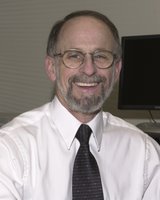 Dr. George Gray, Assistant Administrator of the U.S. Environmental Protection Agency’s Office ofResearch and Development (ORD), has named Dr. Harold “Hal” Zenick left, Director of National Health and Environmental Effects Research Laboratory (HNEERL), which is headquartered in Research Triangle Park, North Carolina. The U.S. EPA’s National Health and Environmental Effects Research Lab isthe largest of ORD's laboratories and centers and produces specializedscientific research to help protect human health and safeguard thenatural environment. NHEERL accomplishes this mission by linking thebest available science and data to the Agency’s goals of making soundpolicy decisions and setting appropriate regulatory requirements.
Dr. George Gray, Assistant Administrator of the U.S. Environmental Protection Agency’s Office ofResearch and Development (ORD), has named Dr. Harold “Hal” Zenick left, Director of National Health and Environmental Effects Research Laboratory (HNEERL), which is headquartered in Research Triangle Park, North Carolina. The U.S. EPA’s National Health and Environmental Effects Research Lab isthe largest of ORD's laboratories and centers and produces specializedscientific research to help protect human health and safeguard thenatural environment. NHEERL accomplishes this mission by linking thebest available science and data to the Agency’s goals of making soundpolicy decisions and setting appropriate regulatory requirements.Dr. Zenick he has been with ORD for 22 years, recently as the acting director andpreviously the deputy director of NHEERL. He has also served as the acting ORD deputy assistan t administrator for science in Washington,D.C., and was a branch chief in EPA's Office of Health and Environmental Assessment. Prior to joining ORD, Dr. Zenick spent 13 years in academia with the Department of Environmental Health in the University of Cincinnati Medical School preceded by an appointment at New Mexico Highlands University. Dr. Zenick has a Ph.D. in physiological psychology from the University of Missouri (Columbia). For more information on the National Health and Environmental Effects Research Laboratory: http://www.blogger.com/.
Wednesday, January 03, 2007
Arlington Country Fights Global Warming
Montgomery County has a similar program called Clean Energy Rewards where they defray up to 40 percent if they purchase renewable energy through PEPCO and Washington Gas. Montgomery County also buys 10 percent of its of its power from wind companies.
Monday, January 01, 2007
Lithium Ion Battery Compared to Nickel Metal Hydride


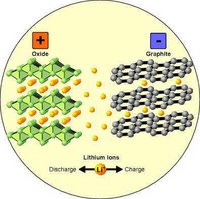
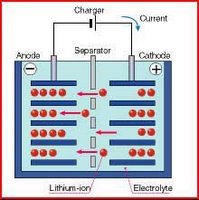 The lithium ion (Li ion) battery, left graphics, is a rechargeable battery technology introduced in 1991 that provides greater charge per pound than nickel metal hydride. In 1993, Toshiba introduced the first notebook in the U.S. with a Li-ion battery. Since then, it has become the most popular battery technology for notebooks, cellphones and other handheld devices. In contrast to nickel-based batteries that require full discharges to keep the battery healthy, lithium ion batteries are better with frequent, shallow discharges before charging again.
The lithium ion (Li ion) battery, left graphics, is a rechargeable battery technology introduced in 1991 that provides greater charge per pound than nickel metal hydride. In 1993, Toshiba introduced the first notebook in the U.S. with a Li-ion battery. Since then, it has become the most popular battery technology for notebooks, cellphones and other handheld devices. In contrast to nickel-based batteries that require full discharges to keep the battery healthy, lithium ion batteries are better with frequent, shallow discharges before charging again.Lithium is the third lightest element, giving a substantial saving in weight compared to batteries using much heavier metals. lithium-ion batteries should be charged early and often. Li-ion batteries should be kept cool. Ideally they are stored in a refrigerator. Aging will take its toll much faster at high temperatures. The high temperatures found in cars cause lithium-ion batteries to degrade rapidly. Lithium-ion batteries should never be depleted to empty (0%). Lithium-ion batteries can easily rupture, ignite, or explode when exposed to high temperatures, or direct sunlight. They should not be stored in a car during hot weather. Short-circuiting a Li-ion battery can cause it to ignite or explode. Never open a Li-ion battery's casing. Li-ion batteries contain safety devices that protect the cells inside from abuse. If damaged, these can also cause the battery to ignite or explode.
Applications of the Nickel Metal (Cadmium) Hidride (NiMH) type battery, top pictures, includes hybrid vehicles such as the Toyota Prius and consumer electronics. NiMH battery technology was invented developed at the end of the 1980's and commercialised first by Matsushita Company. (Wikipedia, Answers)
Russia Plays Hardball with Gazprom Gas Pipeline
 Russia is maximizing profits and manipulating foreign policy with its huge natural gas resources and massive gas pipeline system. Russia is leveraging its natural gas power with European Union countries and its former Soviet Union states. Russia has promised its investors maximum profits by raising rates. Gazprom is the world's 4th largest company.
Russia is maximizing profits and manipulating foreign policy with its huge natural gas resources and massive gas pipeline system. Russia is leveraging its natural gas power with European Union countries and its former Soviet Union states. Russia has promised its investors maximum profits by raising rates. Gazprom is the world's 4th largest company.Gazprom bought a majority stake in Shell's Sakhalin 2 liquefied natural gas development in Russia's Far East for7.25 billion. Critiecs say it was a nationalization. Mitsui & Co and Mitsubishi Corp are Shell's partners in Sakhalin 2.
Gazprom has increased prices on countries that it is at odds with, like Georgia (separatist) and Ukrain (pro-Western). It is also increasing prices on its ally Belarus. The price is being raised from $47 per 1,000 cubic meters to $105. Gazprom also wasts a 50 percent ownership stake in Belarus' national gas company, Beltransgaz. Belarus does not want the partnership. (NYT 12/30/06, Wall St Journal 1/2/07)
Russia Will Never Sign the EU Energy Charter Treaty
 The European Union (EU) wants access to Asian gas via the Russian state-owned Gazprom pipeline, but Rissua does not want to give such obligatory access because it does not want its own interests compromised. Although the EU does not have any negotiating leverage over the Russians, the automatic access to Gazprom's pipeline would give them access to cheaper Asian gas, particularly from Kazakhstan and Turkmenistan. Why would Russia allow its EU customers to buy cheaper gas from a competitor?
The European Union (EU) wants access to Asian gas via the Russian state-owned Gazprom pipeline, but Rissua does not want to give such obligatory access because it does not want its own interests compromised. Although the EU does not have any negotiating leverage over the Russians, the automatic access to Gazprom's pipeline would give them access to cheaper Asian gas, particularly from Kazakhstan and Turkmenistan. Why would Russia allow its EU customers to buy cheaper gas from a competitor?The EU might also be operating under the myth that there is extra capacity to carry Asian gas. Of course, the EU and Russia need to negotiate some sort of provisions for a practical Energy Charter Treaty. Gazprom has the world's largest gas pipeline network.
Russian Railways
 Russian Railways (RR) is a state-owned monopoly that accounts for 3.6 percent of Russia's GDP. It had $22.6 billion in sales in 2004 and operates 85,500 kilometers (53,000 miles) of track. RR has the longest stretch of electrified track in the world - 42,300 kilometers (26,000 miles).
Russian Railways (RR) is a state-owned monopoly that accounts for 3.6 percent of Russia's GDP. It had $22.6 billion in sales in 2004 and operates 85,500 kilometers (53,000 miles) of track. RR has the longest stretch of electrified track in the world - 42,300 kilometers (26,000 miles).Facts about RR: 1) 624,000 freight wagons and 19,600 freight locotives, 2) employs 1.3 million people, 3) owns nearly 1,000 enterprises and 165 subsidiaries, 4) handles 83 percent of all freight (excluding oil that travels by pipeline), 5) carries 1.3 billion passengers a year and accounts for 41 percent of Russia's passenger transport6) passenger services operate at a loss whereas freight is profitable. (Trendline Russia)
Saturday, December 30, 2006
Electric Vehicles in China
 The Communist Party's Central Committee wants innovation. The Chinese people will want hundreds of millions of vehicles and in order to prevent health-killing air pollution, the need for pollution-free vehicles and renewable energy in China is clear. Mao Zongqiang is one of China抯 leading experts on hydrogen and other alternative fuels at Tsinghua University's Nuclear and New Energy Institute.
The Communist Party's Central Committee wants innovation. The Chinese people will want hundreds of millions of vehicles and in order to prevent health-killing air pollution, the need for pollution-free vehicles and renewable energy in China is clear. Mao Zongqiang is one of China抯 leading experts on hydrogen and other alternative fuels at Tsinghua University's Nuclear and New Energy Institute.Shen-Li High Tech Co. Ltd., a private company in Shanghai, is manufacturing a hydrogen fuel cell demonstration vehicle. It wants to produce hydrogen power for buses, taxis and generators. The company started operation in 1998 and the founder and president is Hu Liqing, 43. His factory is in Shanghai's suburban Longyang Industrial Garden. The company hopes to find a way to economically mass-produce the propulsion systems. The Shen-Li company is considering a partnership with the state-owned Shanghai Automotive Industry Corp. to produce the cars, the Suzhou company would produce the buses.
A subsidiary of Fosun Pharmaceutical Corp purchased a 36 percent share of Shen-Li in 2006 and the company is now focused on electricity generators, which offer hope for more immediate sales in China and abroad.
Fuyuan Century Fuel Cell Power Co. Ltd. in suburban Beijing, headed by Zhong, 63, is researching ways to make membranes, which are the key and most expensive element in hydrogen fuel cells. DuPont, in the USA, dominates the market for these components. The Beijing city government purchased three hydrogen-powered demonstration buses from DaimlerChrysler for the 2008 Summer Olympics.
A chemical reaction in the fuel cell combines hydrogen and oxygen to produce electric current to power a vehicle and the waste emission is water vapor. Unfortunately, the problem is that producing, storing and distributing the hydrogen costs money and requires an infrastructure of filling stations that does not exist. (Wash Post)
Wednesday, December 27, 2006
Acid Rain Program Shows Continued Success
There were no units out of compliance in 2005. In 2005, SO2 emissions from electric power generation were more than 5.5 million tons below 1990 levels. NOx emissions were down by about 3 million tons below 1990 levels. The program's emission cuts have reduced acid deposition and improved water quality in U.S. lakes and streams.The emission reductions to date also have resulted in reduced formation of fine particles, improved air quality, and human health related benefits.
A 2005 analysis in the Journal of Environmental Management estimated the value of the program's human health and environmental benefits in the year 2010 to be $122 billion annually (2000$). Most ofthese benefits result from the prevention of air quality-related health impacts, such as premature deaths and work days missed due to illness, but they also include improved visibility in parks and other recreational and ecosystem improvements.
Issued in March 2005, the Clean Air Interstate Rule (CAIR) will build upon the Acid Rain Program to further reduce SO2 and NOx emissions. CAIR achieves large reductions of SO2 and NOx emissions across 28 eastern states and the District of Columbia. When fully implemented, CAIR will reduce SO2 emissions in these states by more than 70 percent and NOx emissions by more than 60 percent from 2003 levels.
The Acid Rain Progress report summarizes human health and environmental improvements due to the program. The report also includes sections oncompliance strategies, surface water quality monitoring, environmentaljustice, and EPA's framework for accountability.
Emission & Allowance Data & Maps
The Acid Rain Program 2005 Progress Report
Department of Energy October Short-Term Energy Outlook
 The U.S. Energy Information Administration’s (EIA) October Short-Term Energy Outlook Highlights:
The U.S. Energy Information Administration’s (EIA) October Short-Term Energy Outlook Highlights:* Households heating primarily with electricity can expect a slight price increase this winter and the demand for electricity is likely to continue to grow through 2007.
* Prices for petroleum products and natural gas are projected to increase from their current levels, but are not expected to surpass last winter’s levels.
* Next spring’s gasoline inventories are expected to be lower than last spring’s and colder winter weather would reduce gasoline output.
* The world oil requirement is expected to increase, resulting in an increase in the demand from OPEC. OPEC is not likely to increase crude oil production.
Short-Term Energy Outlook Report
EPA Publishes Updated List for Boutique Fuels
 To comply with the Energy Policy Act of 2005, EPA has published a list of "boutique fuels." This list serves as the basis for any future adoption of boutique fuels into State Implementation Plans. A boutique fuel is a unique fuel blend developed by a state or local air pollution agency and approved by EPA as part of a State Implementation Plan to support meeting national air quality standards. The list limits the number and type of different fuels used around the country.
To comply with the Energy Policy Act of 2005, EPA has published a list of "boutique fuels." This list serves as the basis for any future adoption of boutique fuels into State Implementation Plans. A boutique fuel is a unique fuel blend developed by a state or local air pollution agency and approved by EPA as part of a State Implementation Plan to support meeting national air quality standards. The list limits the number and type of different fuels used around the country.The existence of too many fuel types in a given area may present challenges for production, distribution, and storage during periodic disruptions like refinery shutdowns and weather-related incidents. To address this issue, President Bush directed EPA Administrator StephenJohnson to convene a Boutique Fuels Task Force. A report detailing the findings from this Boutique Fuels Task Force was published in late June.
Butique Fuel List
Boutique Fuel Task Force